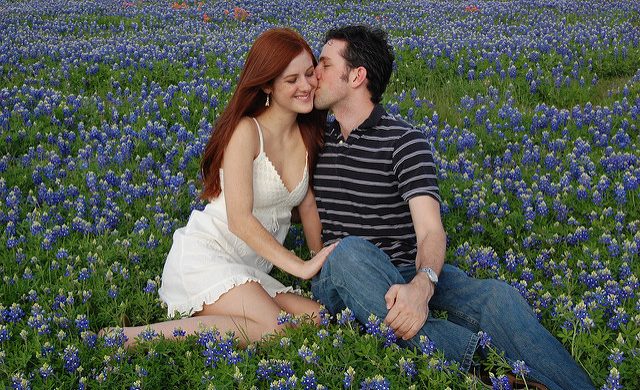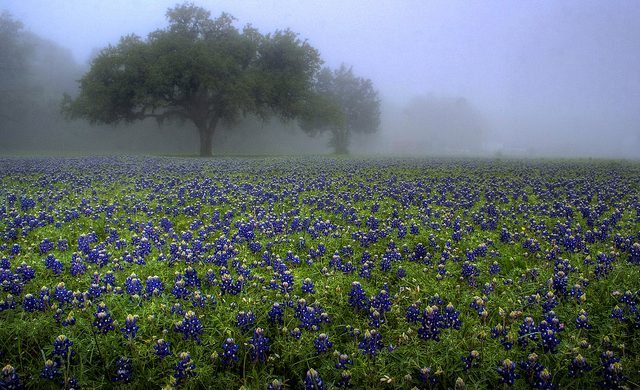You can never have too many bluebonnet photos framed on your walls, tacked to the fridge, or plastered all over Facebook and Instagram. Check out the tips below to take your wildflower photos up a notch this year.
Lifestyle
5 Tips for Taking the Best Bluebonnet Photos
1. Background

Photo: Flickr/Kimberley Williams
When you’re standing with a field of bluebonnets before you, it’s instinctive to fill the frame with nothing but bluebonnets in an attempt to capture the magnificence of a vast stretch of wildflowers. Just remember that including other objects in a photo can enhance the scale and allure of the Bluebonnets. If you don’t have any people in your photo, a windmill, train tracks or old farm equipment can create an eye-catching contrast between the wild and civilization. A longhorn or horse ambling among the Bluebonnets always adds to a sense of Central Texas place. Make sure you keep busy roads, clutter, and anything else distracting to the eye out of your photos.
2. Lighting

Photo: Flickr/Wayne Weatherred
The best time to take your bluebonnet photos is in the morning or evening, as the light is soft and even and won’t create any harsh shadows or glares. If you get out there extra early or late, you can even use the rising or setting sun in your photo. Not standing directly below the sun’s blazes in the mid-day Texas heat is also a bonus, as people posing in your photos won’t have to squint or wipe their foreheads. Don’t forget to experiment with the light, as well. Texas Monthly suggests standing at a 45-degree angle with the sun behind you or backlighting your subject to create an ethereal look.
3. Clothing

Photo: Flickr/collective nouns
Imagine taking what seems like the perfect bluebonnet photo, and then getting home and realizing your subject was wearing blue, and now looks like a floating head amidst wildflowers. Yeah, not fun. When taking photos of people, it’s important to put some forethought into clothing. Choose colors that compliment the bluebonnets, avoid intense patterns and logos, and remember to color coordinate with anyone else in the photographs. Cream and white are always safe, and many people choose yellow, red, or pink to add a colorful splash to the sea of blue.
4. Variety




